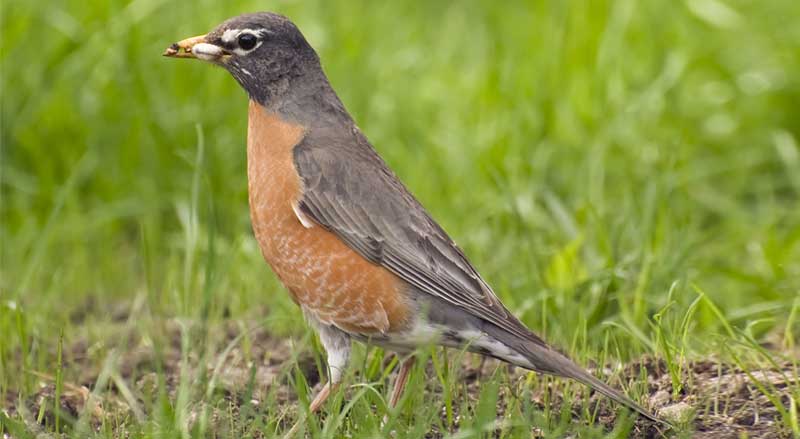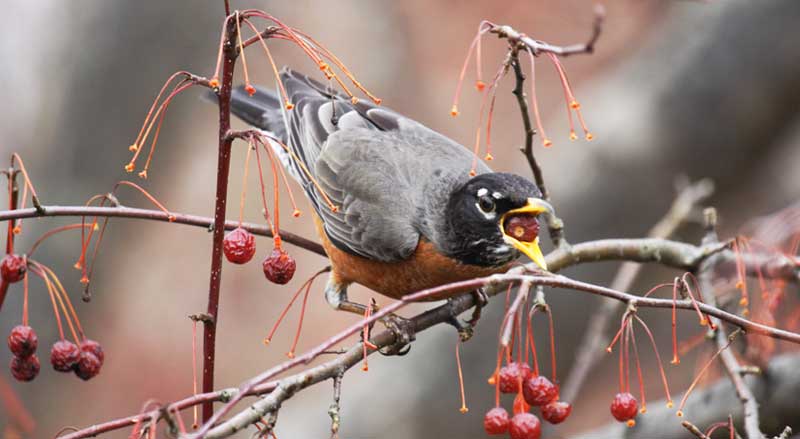Lawn grubs can quickly become a serious problem for your landscape. The stubborn infestation can spread rapidly and do lots of damage. Grubs will eventually destroy your lawn and feed on your greenery if not properly treated—they won’t go away by themselves.
And perhaps the most unnerving aspect of a lawn grub infestation is that it can be destroying your lawn roots first—without you even knowing it.
Here’s what you need to know about spring grub control for your lawn.
What Are Lawn Grubs?
Lawn grubs (white grubs) are beetles in the larval stage. They are small white or off-white creatures that form a “c” shape. They have soft bodies and legs up front, near their head. They are most active in the spring and early summer.
People commonly find grubs in yards all across the US. If your lawn has fewer than five grubs per square foot of lawn, it shouldn’t be a problem. However, lawn grubs can quickly get out of control and destroy your lawn.
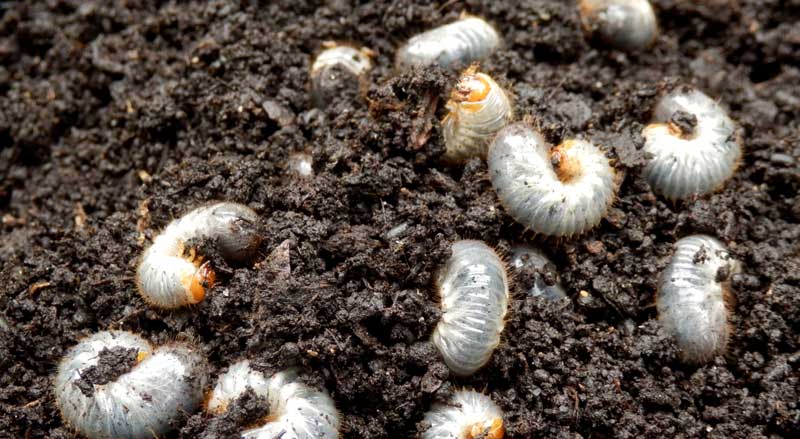
There are different white grub species in the northeaster US. In New Jersey and surrounding states, the Oriental beetle is the most prevalent species of white grub. White grubs can also be immature forms of Japanese beetles, June beetles, or European chafers.
These beetles typically lay eggs in summer.
After the larval beetles hatch underneath your lawn, they quickly feed on the roots of the grass and on some soil matter. The larger the grub infestation, the more damage your lawn will suffer—and this damage will spread rapidly.
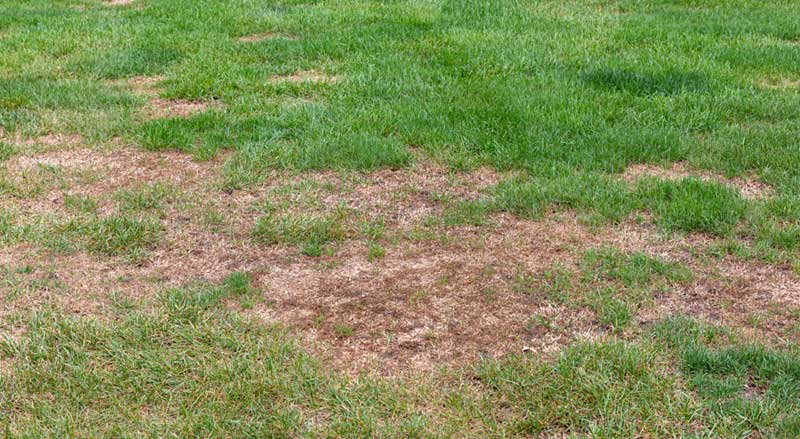
An extremely healthy lawn can better tolerate grubs. All grass can tolerate some grubs, but an unchecked infestation will eventually do immense damage to your lawn.
When the cooler temperatures arrive in fall and winter, the grubs burrow deeper into the ground. Then they go dormant, but return, healthy and just as hungry, the following spring.
This time, the larvae become pupae, at which point they once again burrow into the ground for a few weeks. During this time the pupae become adult beetles, after which they finally emerge above ground.
How Lawn Grubs Damage Your Lawn
You may not know lawn grubs are present until it’s too late—after the damaged grass turns brown and dies. And keeping a lawn healthy isn’t protection against grubs.
In fact, grubs love healthy lawns with rich soil. So don’t be fooled if your lawn looks green and hearty—grubs may well be attacking it from underneath.
As a grub infestation grows, the lawn becomes weaker and can’t even effectively fight off weed growth. Your once prized lawn looks anything but green and healthy.
Unfortunately, the problem doesn’t stop there. Once a grub has grown into an adult beetle, it then moves on to eating other plants in your garden. Clearly, lawn grubs are not your landscape’s friend and need to be controlled.
Telltale Signs You Need Grub Control
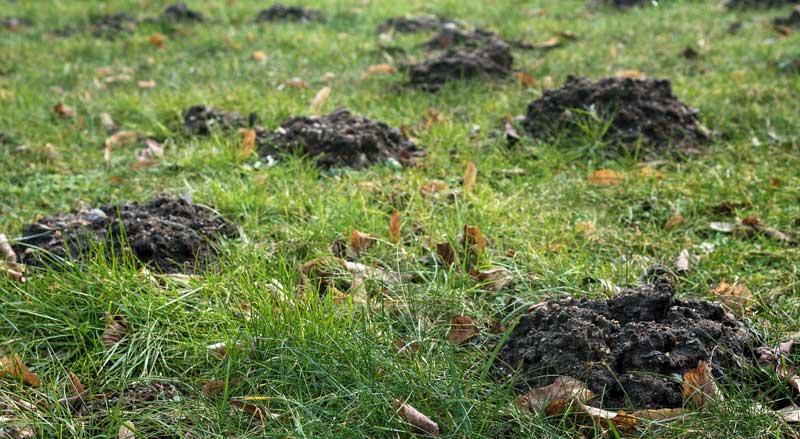
Lawns that grubs have damaged have:
- Sections of brown, patchy grass that are getting worse
- Areas of yellowing grass
- Grass easily pulling up due to damaged or missing roots
- A drought-stricken look
- Growing numbers of beetles or moths
- Raccoons and skunks digging to find grubs
- Increased gopher, mole, and bird activity
In New Jersey, grubs are most active in the late spring to early summer, and then again in the early fall. If your lawn damage seems to follow this timeframe, it’s a good sign that your lawn has grubs.
If you think you have lawn grub damage, lift a piece of dead turf and you’ll get a definitive answer. If it has been damaged by grubs, the dead lawn will easily roll up. Upon inspection, you’ll see that the roots are gone. And the grubs are large enough to be seen by the naked eye as they feed on the remaining grass roots.
Ways to Eliminate and Protect Your Lawn from Grubs
There are several ways and times of the year to treat lawn grubs. Treatments include organic solutions and chemical treatments—as well as preventive steps you can take. You may need a chemical treatment to treat severe grub infestation.
Effective grub treatment depends on two key factors:
- The type of grub being treated
- The time of year the treatment is applied
First, it’s important that the treatment matches the specific grub type being treated. The treatment will vary depending on the type of grub.
Second, the right timing is key because the grub control product should be applied during the peak activity period for those specific grubs found in your garden.
If you live in New Jersey, it’s usually recommended that grub control products are applied in late spring or early summer. You should apply the treatment again in the early fall.
In the winter, most grubs are deep in the ground. It is difficult to treat them at this point because the ground needs to be very well saturated for products to reach them.
A landscape professional can determine the type of grub infestation your lawn is facing, and which treatment will be most effective.
If you are applying a grub control treatment yourself:
- Follow all label instructions, including specific treatment applications and safety precautions
- Thoroughly water your lawn after treatment to help the product reach the grubs underground
- Monitor your lawn for any ongoing grub issues
- Re-treat, if needed, according to the label directions
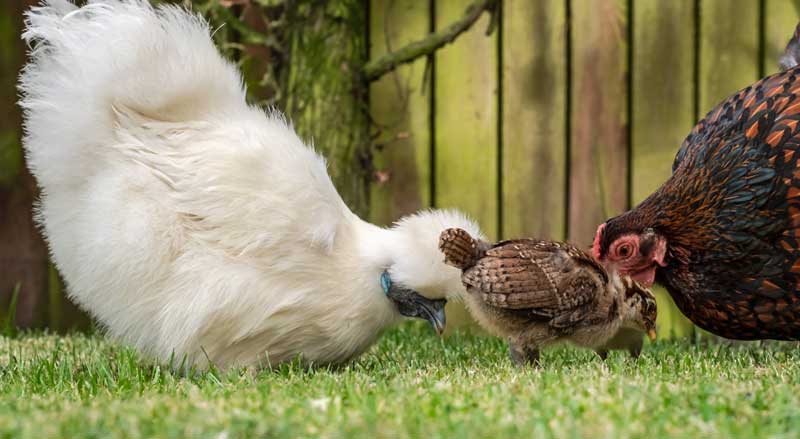
Some natural ways to discourage lawn grubs include:
- Limiting the amount of moisture your lawn gets
- Introducing natural predators to your landscape, including backyard chickens
- Dethatching your lawn
- Aerating and overseeding areas that have already had noticeable grub damage
- Using grub-resistant grasses for new seeding or overseeding
- Monitoring your lawn for grub damage to help treat grubs at the earliest, most vulnerable development stage
Mow lawns before applying any grub treatment; this will protect bees and remove weeds, making the product better able to help the grass.
Here are ways to have an even more beautiful landscape this spring:
- Use this spring clean-up guide
Contact Landscape Solutions for exceptional landscape care, including treatment of grub infestations.

